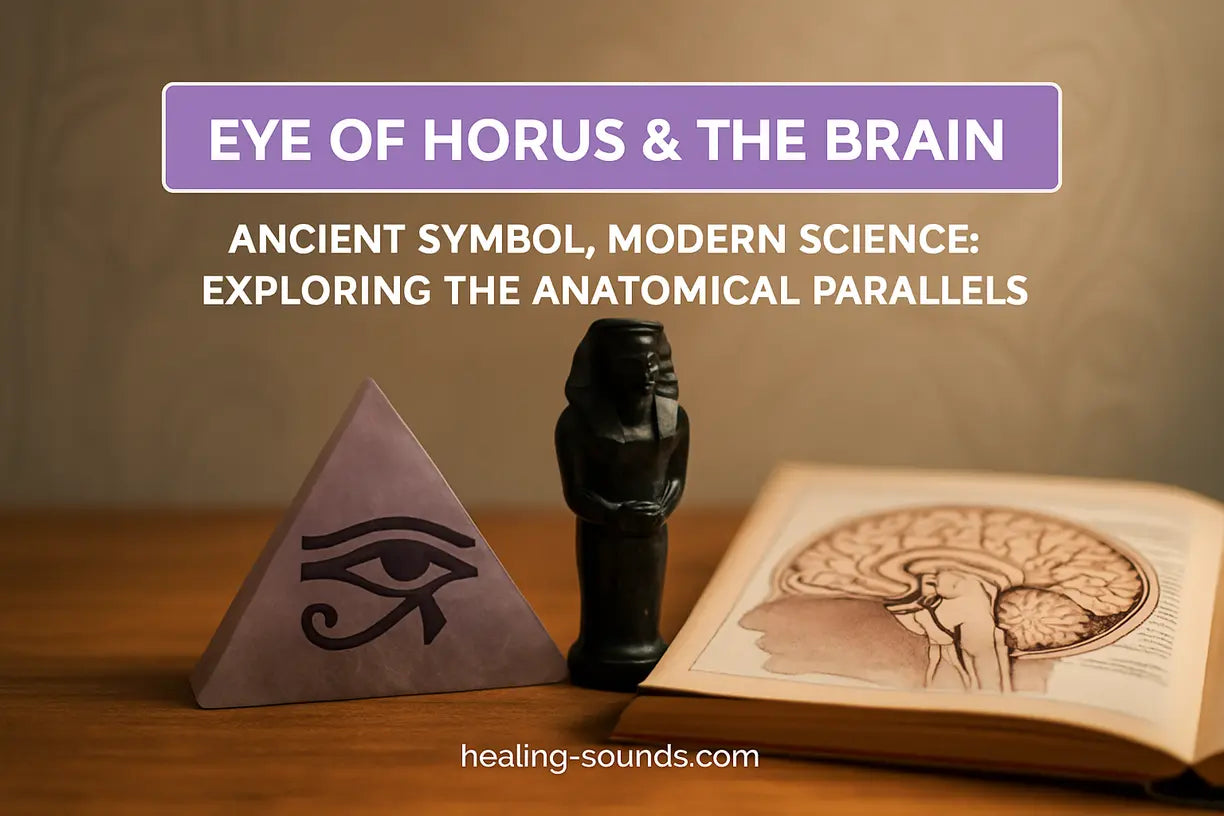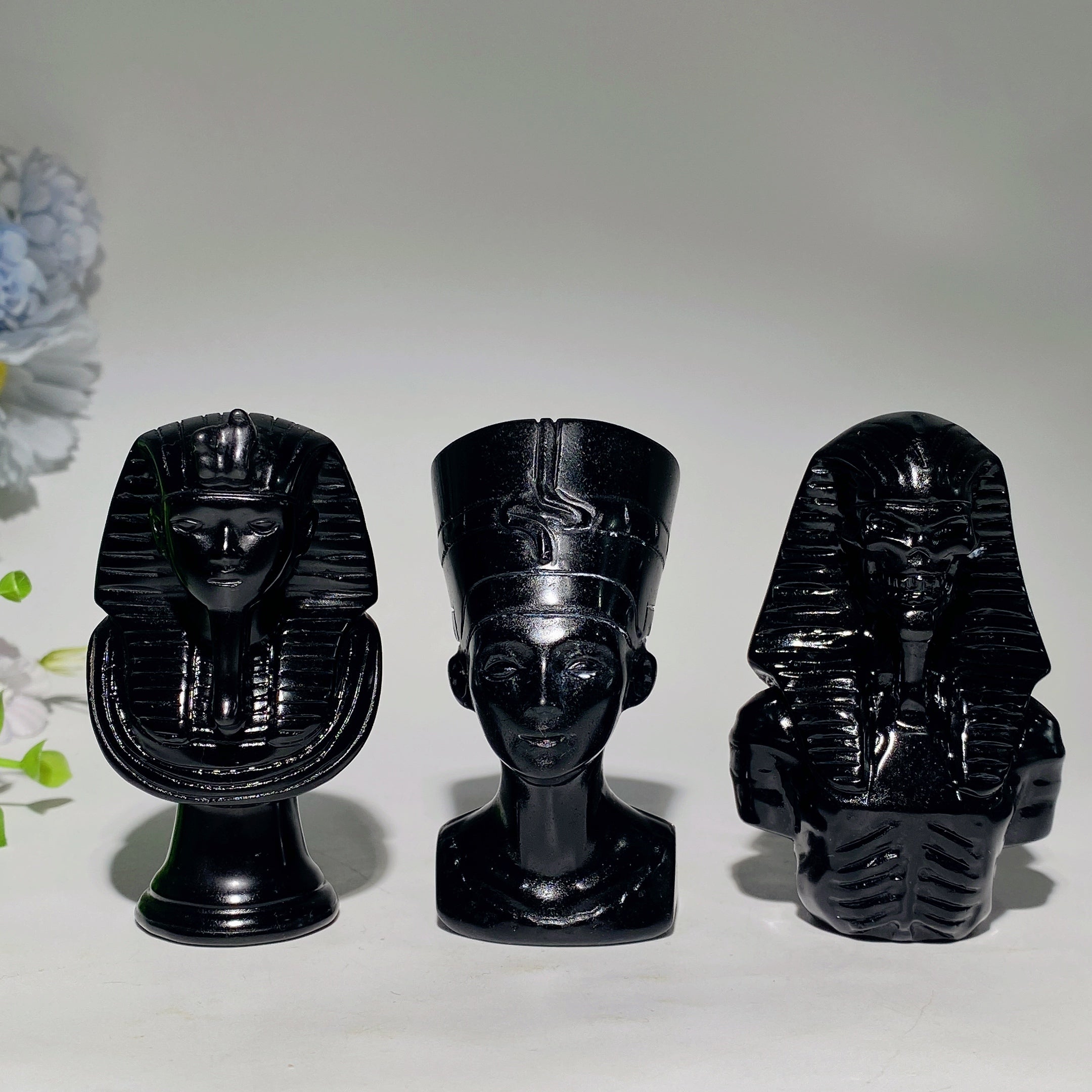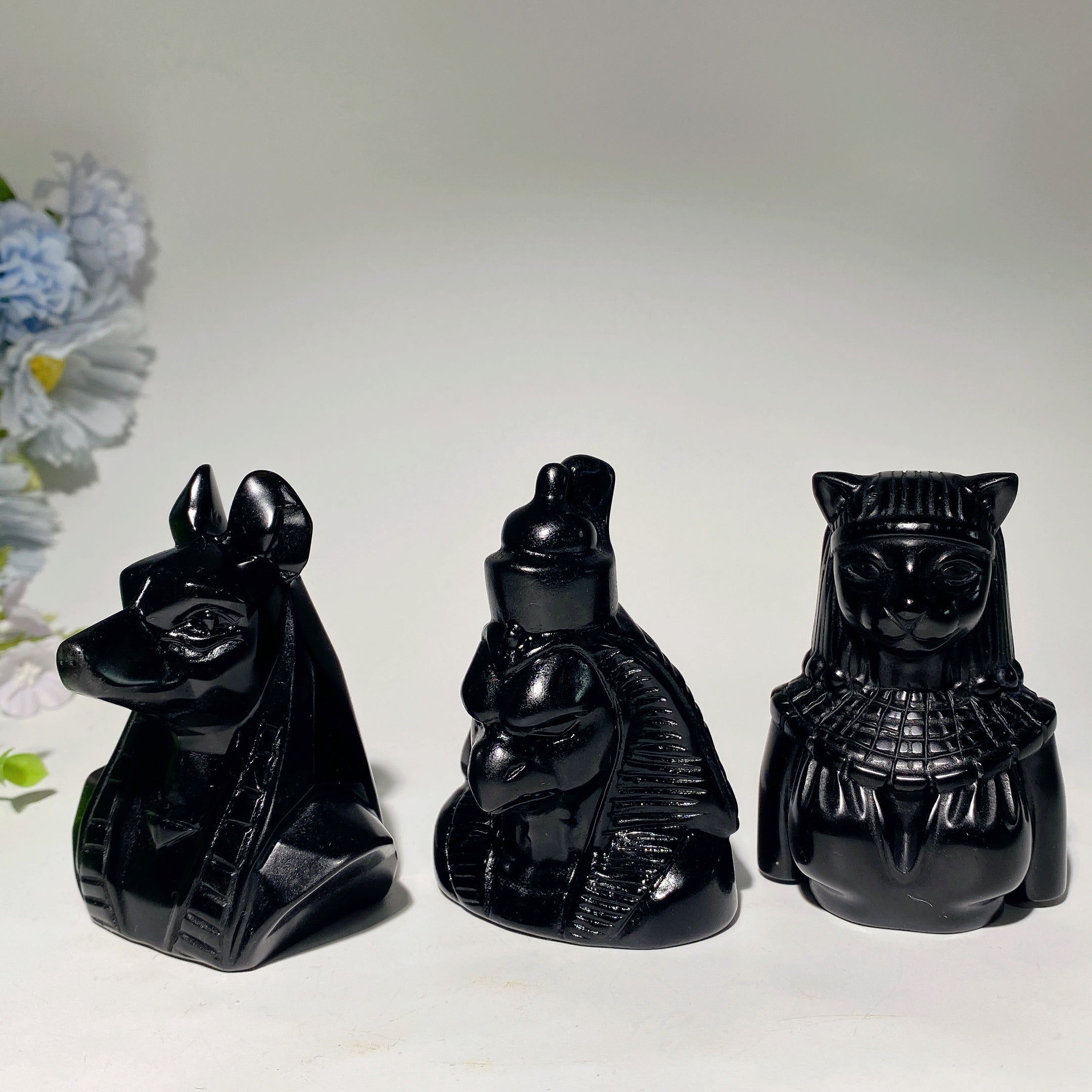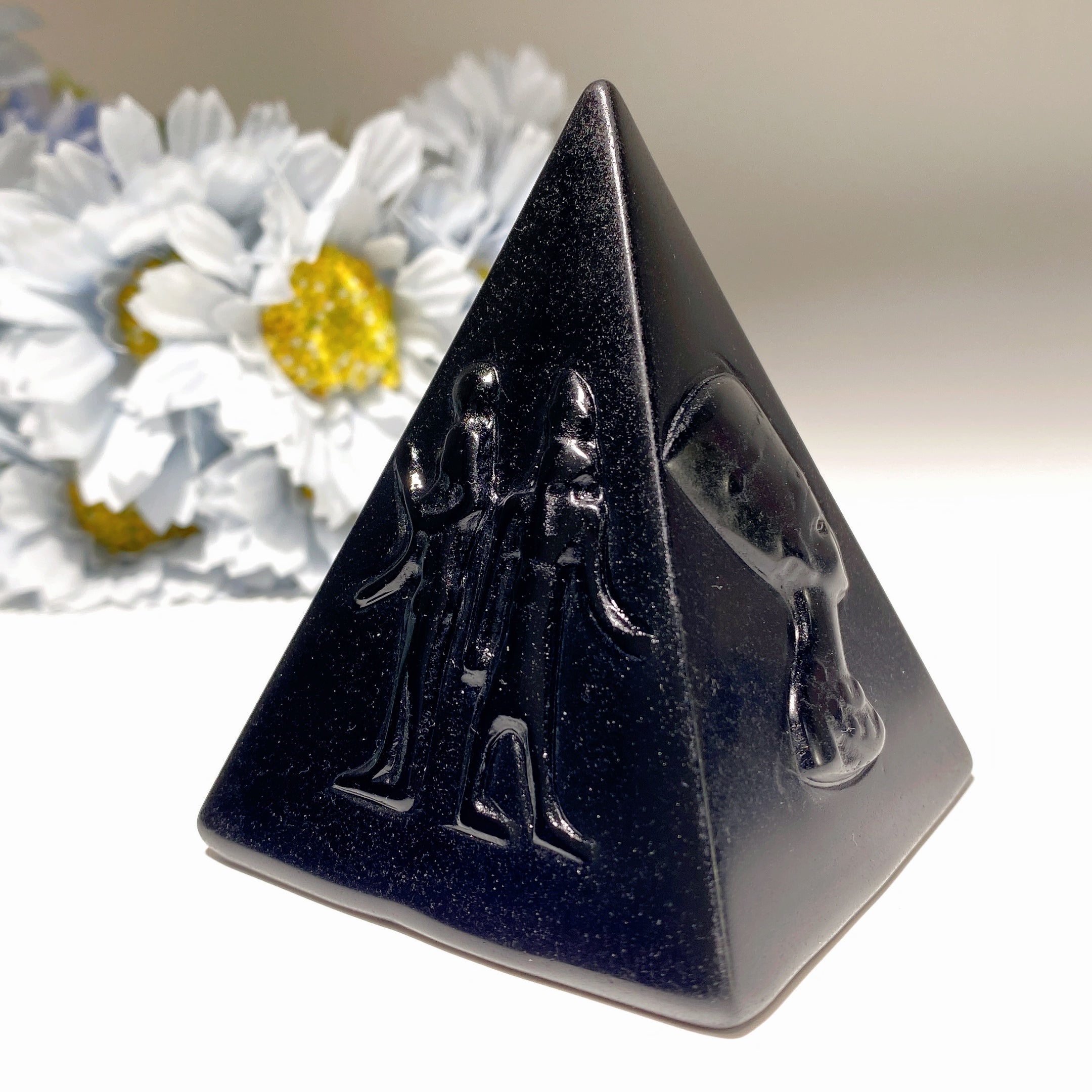Das anhaltende Geheimnis des Auges des Horus
Das Auge des Horus, auch „Udjat“ genannt, ist eines der bekanntesten Symbole des alten Ägypten. Mythologisch stellt es das geheilte Auge des Himmelsgottes Horus dar, das der Gott Thot nach einem Kampf mit seinem Onkel Seth wiederhergestellt hatte. Dadurch wurde es zu einem mächtigen Symbol für Genesung, Gesundheit und Schutz vor dem Bösen. Jahrhundertelang wurde es als Amulett getragen und auf Gräber gemalt, um Sicherheit im Jenseits zu gewährleisten. Neue Theorien legen jedoch nahe, dass sein Design weit mehr als nur symbolisch ist; es könnte sich um eine komplexe anatomische Darstellung handeln, die über Generationen weitergegeben wurde.Entschlüsselung der anatomischen Parallele: Das Auge des Horus im Gehirn
Betrachtet man das Symbol des Horusauges neben einer sagittalen Ansicht (einem seitlichen Querschnitt) des menschlichen Gehirns, ist die Ähnlichkeit verblüffend. Neurowissenschaftler und Historiker haben darauf hingewiesen, dass die einzelnen Teile des Symbols direkt mit wichtigen Strukturen des Mittelhirns zu korrespondieren scheinen, einer Region, die für die Verarbeitung sensorischer Informationen und die Regulierung des Bewusstseins zuständig ist. Dies deutet darauf hin, dass die alten Ägypter möglicherweise ein weitaus tieferes Verständnis der menschlichen Anatomie hatten als bisher angenommen.
Eine perfekte Übereinstimmung: Zuordnung des Symbols zu Gehirnstrukturen
Die Eins-zu-eins-Zuordnung macht diese Theorie so überzeugend. Jedes Element des Horusauges scheint mit einem bestimmten Teil der Gehirnanatomie in Einklang zu stehen, insbesondere mit dem Thalamus und den umgebenden Strukturen.- Die Augenbraue: Diese geschwungene Linie spiegelt perfekt die Form des Corpus callosum wider, des Nervenfaserbündels, das die linke und rechte Gehirnhälfte verbindet.
- Die Pupille: Die Mitte des Auges liegt auf einer Linie mit der Zirbeldrüse (oder der interthalamischen Adhäsion), einer kleinen endokrinen Drüse, die mit der Produktion von Melatonin und in spirituellen Traditionen mit dem „dritten Auge“ in Verbindung gebracht wird.
- Der hintere Teil des Auges (Dreieck): Dies entspricht dem Thalamus , einer wichtigen Relaisstation für Sinnesinformationen.
- Die Vorderseite des Auges (Dreieck): Dieser Teil ist mit der vorderen Kommissur oder Teilen des limbischen Systems ausgerichtet, die an Gedächtnis und Emotionen beteiligt sind.
- Die Träne (oder der Stiel): Diese absteigende Locke soll die Medulla oblongata und den Hirnstamm darstellen, die lebenswichtige Funktionen wie Atmung und Herzschlag steuern.
- Die R-förmige Biegung: Diese Schnörkelform symbolisiert vermutlich das Kleinhirn , das die willkürlichen Bewegungen koordiniert, oder das olfaktorische Trigonum , das mit dem Geruchssinn in Verbindung steht.
Die Zirbeldrüse: Das „Dritte Auge“ im Zentrum
Das Herzstück des Horusauges in der Gehirnverbindung ist die Zirbeldrüse. Diese winzige, tannenzapfenförmige Drüse sitzt tief im Gehirn und wird in spirituellen Traditionen seit Jahrhunderten verehrt. Der Philosoph René Descartes beschrieb sie als „Hauptsitz der Seele“ und sie gilt weithin als physische Manifestation des dritten Auges – des Zentrums der Intuition, spiritueller Einsicht und des höheren Bewusstseins. Die Tatsache, dass sich die „Pupille“ des Horusauges genau an dieser Stelle befindet, verstärkt die Bedeutung des Symbols als Werkzeug zum Erwecken der inneren Sicht und zur Wahrnehmung von Wahrheiten jenseits der physischen Sinne. Um eine tiefere wissenschaftliche Perspektive auf ihre Funktionen zu gewinnen, beginnen Studien wie die zur Rolle der Zirbeldrüse, ihre umfassenderen Auswirkungen zu erforschen.Jenseits der Anatomie: Die spirituelle Bedeutung und moderne Anwendung
Das Verständnis dieser anatomischen Parallele verwandelt das Auge des Horus von einem einfachen historischen Artefakt in ein mächtiges Werkzeug für persönliches Wachstum. Es erinnert uns daran, dass die Schlüssel zu Erleuchtung und Schutz nicht nur äußere Symbole sind, sondern in unserer eigenen Biologie verschlüsselt sind. Indem Sie sich während der Meditation auf das Auge des Horus konzentrieren, können Sie sich bewusst mit diesen Gehirnzentren verbinden und so Ihre Intuition schärfen, geistige Klarheit fördern und Ihr Gefühl innerer Sicherheit stärken.- Das Symbol des Horusauges weist eine verblüffende Ähnlichkeit mit einem Querschnitt des menschlichen Gehirns auf.
- Wichtige Komponenten des Symbols sind mit Strukturen wie der Zirbeldrüse, dem Thalamus und dem Kleinhirn verbunden.
- Diese Verbindung legt nahe, dass das Symbol nicht nur äußeren Schutz darstellt, sondern auch das Erwachen unserer eigenen inneren Vision und Intuition.

1,5-1,9 Zoll Trolleit Auge des Horus Kristallschnitzerei
$12.90 $20.90
Verbinden Sie alte Symbolik und Meditation mit diesem Horusauge-Kristall, der Schutz und Einsicht repräsentiert.
Produkt entdeckenIntegration alter Weisheiten in Ihren heiligen Raum
Symbole alter Weisheit in Ihr Zuhause oder Ihren Arbeitsplatz zu bringen, kann die Energie Ihrer Umgebung verändern. Objekte mit ägyptischer Symbolik, wie das Auge des Horus, dienen als ständige Erinnerung an Schutz, Weisheit und innere Kraft. Sie verbinden uns mit einer Linie spiritueller Sucher, die die tiefe Beziehung zwischen Kosmos, Geist und unserer eigenen physischen Form verstanden. In Museumssammlungen wie dem Penn Museum erfahren Sie mehr über die reiche Geschichte solcher Artefakte. Durch das Aufstellen von Figuren oder Pyramiden, in die diese Symbole eingraviert sind, können Sie einen Mittelpunkt für die Meditation schaffen, die schützende Energie eines Raumes verstärken und eine tiefere Verbindung zu Ihrer eigenen spirituellen Reise herstellen.
Verschönern Sie Ihren heiligen Raum mit ägyptischer Symbolik
Bringen Sie die Kraft der ägyptischen Tradition in Ihren heiligen Raum mit schützenden Obsidianfiguren, die von antiken Ikonen inspiriert sind. Mehr erfahren ➔
Steigern Sie die Energie Ihrer Umgebung mit einer Pyramide, in die ägyptische Symbole eingraviert sind, und kanalisieren Sie gezielten Schutz und Erdung. Mehr erfahren ➔
Fazit: Die Brücke zwischen antiker Symbolik und innerer Anatomie
Die bemerkenswerte Parallele zwischen dem Auge des Horus und dem menschlichen Gehirn ist mehr als ein historischer Zufall; sie ist ein tiefgreifender Beweis für die enge Verbindung von Wissenschaft und Geist. Sie zeigt uns, dass antike Zivilisationen möglicherweise über ein tiefes, intuitives Wissen über den menschlichen Körper und das Bewusstsein verfügten. Indem wir das Auge des Horus in der Gehirntheorie erforschen, ehren wir nicht nur diese alte Weisheit, sondern stärken auch unsere eigene Kraft. Dieses Symbol dient als kraftvoller Leitfaden und erinnert uns daran, dass die ultimative Quelle von Schutz, Heilung und Erleuchtung in der komplexen, heiligen Anatomie unseres eigenen Geistes liegt.Häufig gestellte Fragen zu „Das Auge des Horus und das Gehirn“
Das „Auge des Horus im Gehirn“ bezieht sich auf die Theorie, dass das altägyptische Symbol eine detaillierte anatomische Karte eines Querschnitts des menschlichen Gehirns darstellt. Jeder Teil des Symbols entspricht einer Schlüsselstruktur, wie dem Thalamus, dem Corpus callosum und vor allem der Zirbeldrüse, die oft als „Drittes Auge“ bezeichnet wird.
Im Kontext dieser Theorie entspricht die Zirbeldrüse der Pupille des Horusauges. Spirituell gesehen gilt die Zirbeldrüse als Sitz des dritten Auges, das für Intuition, Hellsehen und die Verbindung zum höheren Bewusstsein verantwortlich ist. Ihre Ausrichtung im Symbol deutet darauf hin, dass das Horusauge das Erwachen dieser spirituellen Sicht darstellt.
Das Auge des Horus zu sehen, kann auf verschiedene Weise interpretiert werden. Traditionell ist es ein Zeichen des Schutzes, der Heilung und der Wiederherstellung . Im spirituellen Kontext kann es ein Erwachen der Intuition oder einen Aufruf bedeuten, der inneren Weisheit und der „unsichtbaren“ Welt mehr Aufmerksamkeit zu schenken.
Das Horusauge als Symbol stammt ursprünglich aus dem alten Ägypten. Im Kontext der anatomischen Theorie befindet es sich im menschlichen Gehirn, wo seine Form im sagittalen Querschnitt die Strukturen des Mittelhirns, einschließlich Thalamus, Hirnstamm und Zirbeldrüse, widerspiegelt.
Obwohl es keinen eindeutigen historischen Beweis dafür gibt, dass die alten Ägypter das Symbol absichtlich als Gehirnkarte entworfen haben, ist der anatomische Zusammenhang für viele Forscher zu stark, um ihn zu ignorieren. Es bleibt eine überzeugende Theorie, die ein potenziell tiefes Wissen über Anatomie und Physiologie hervorhebt und Wissenschaft mit Spiritualität verbindet.







